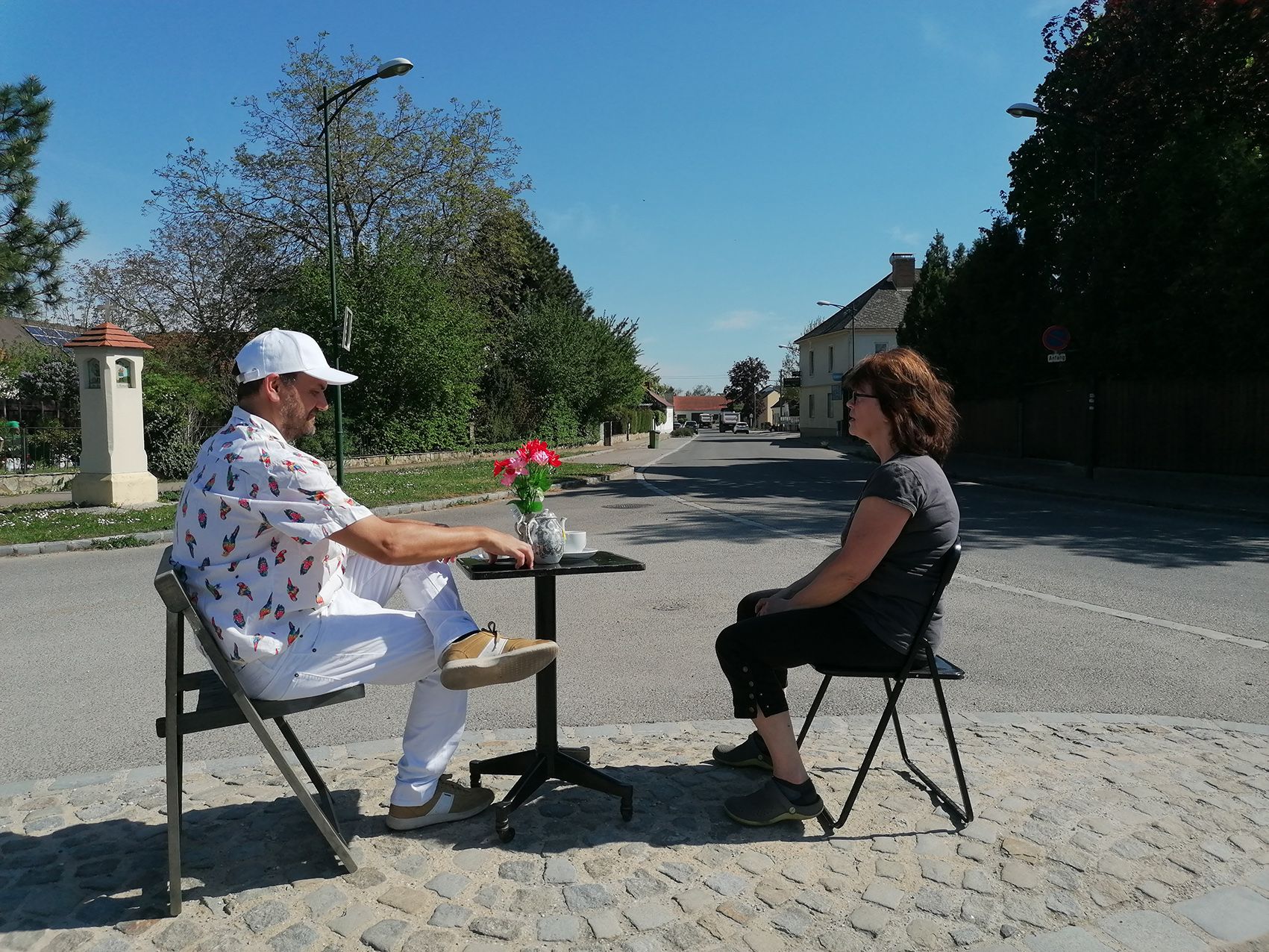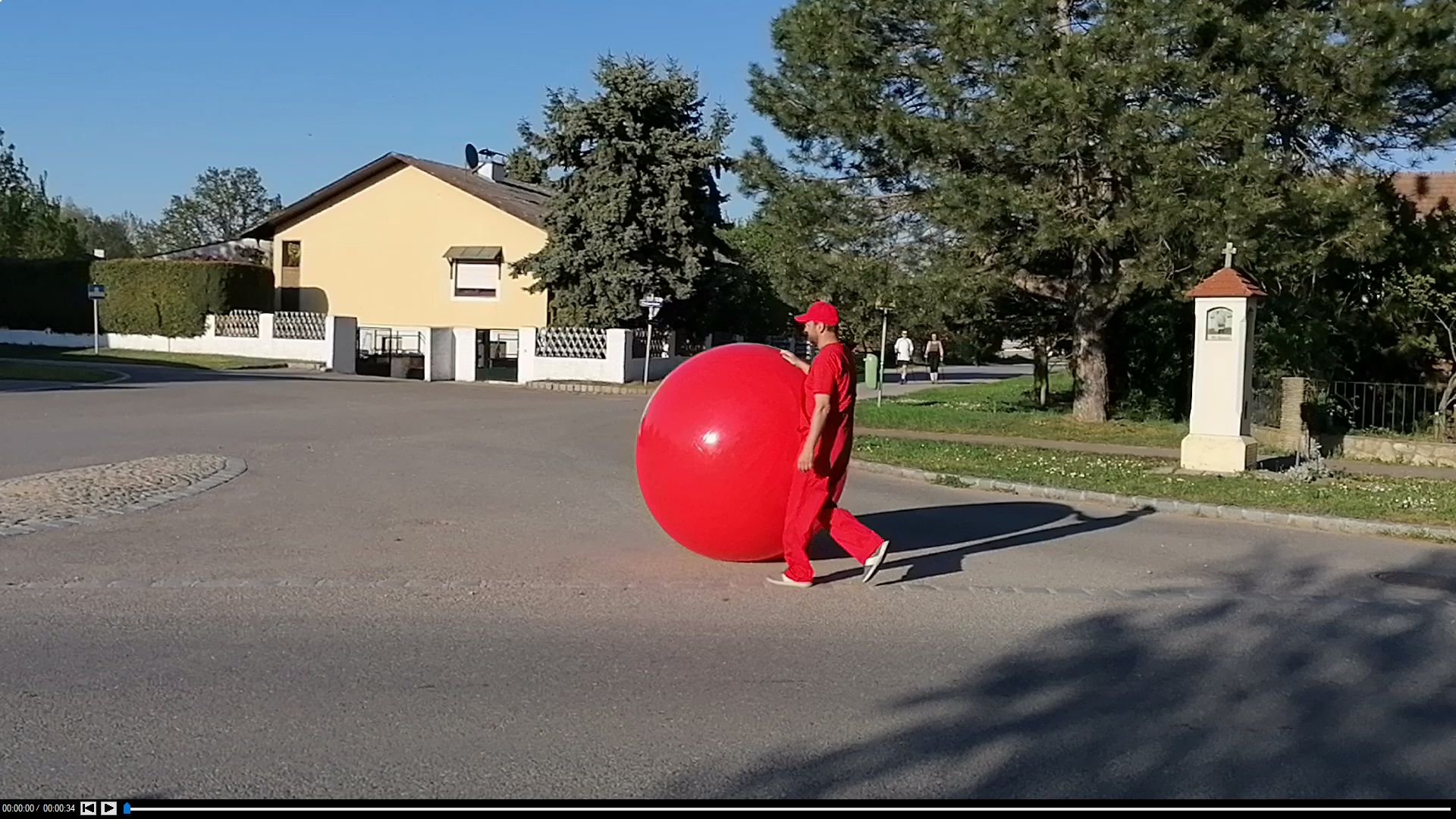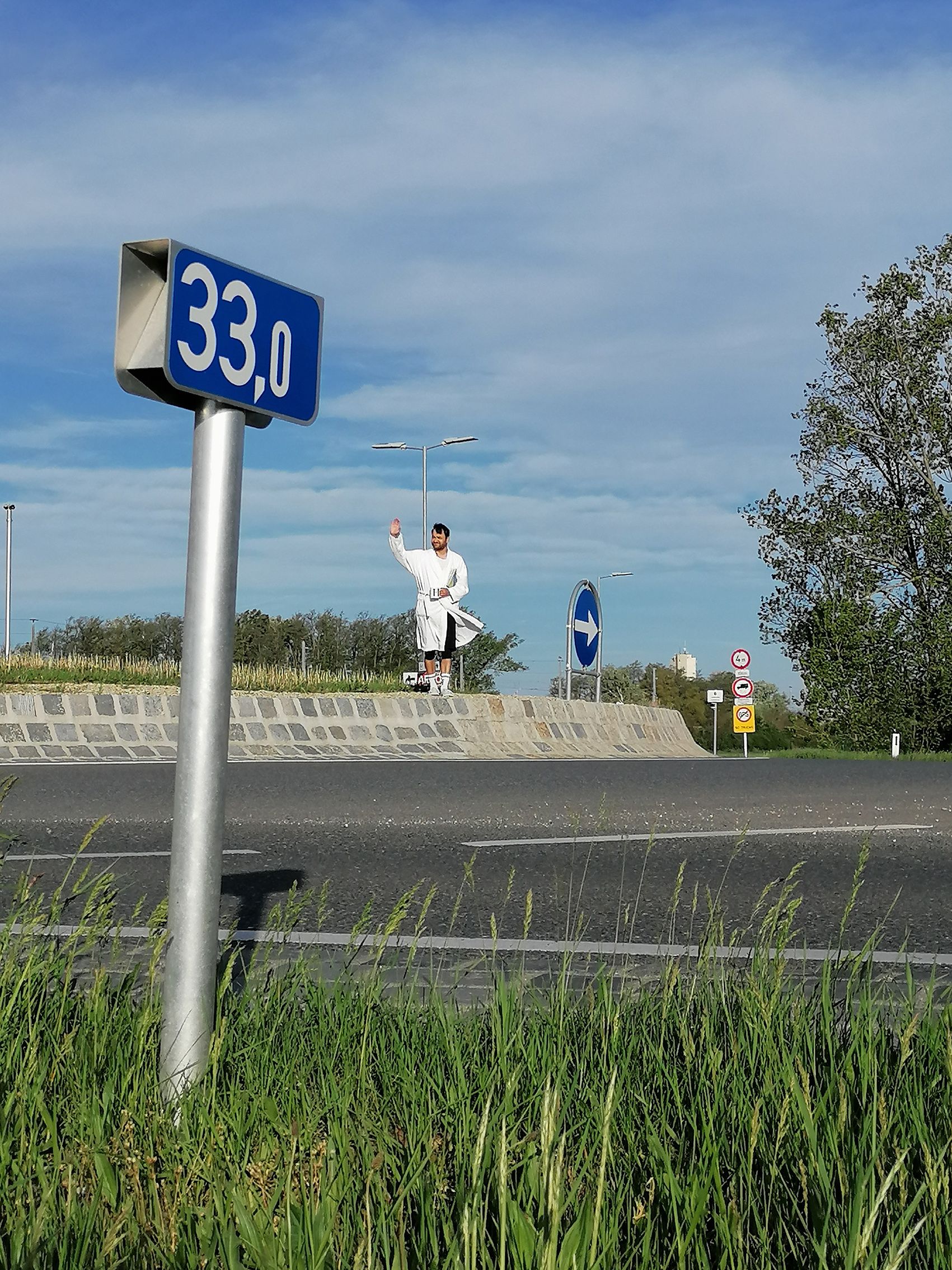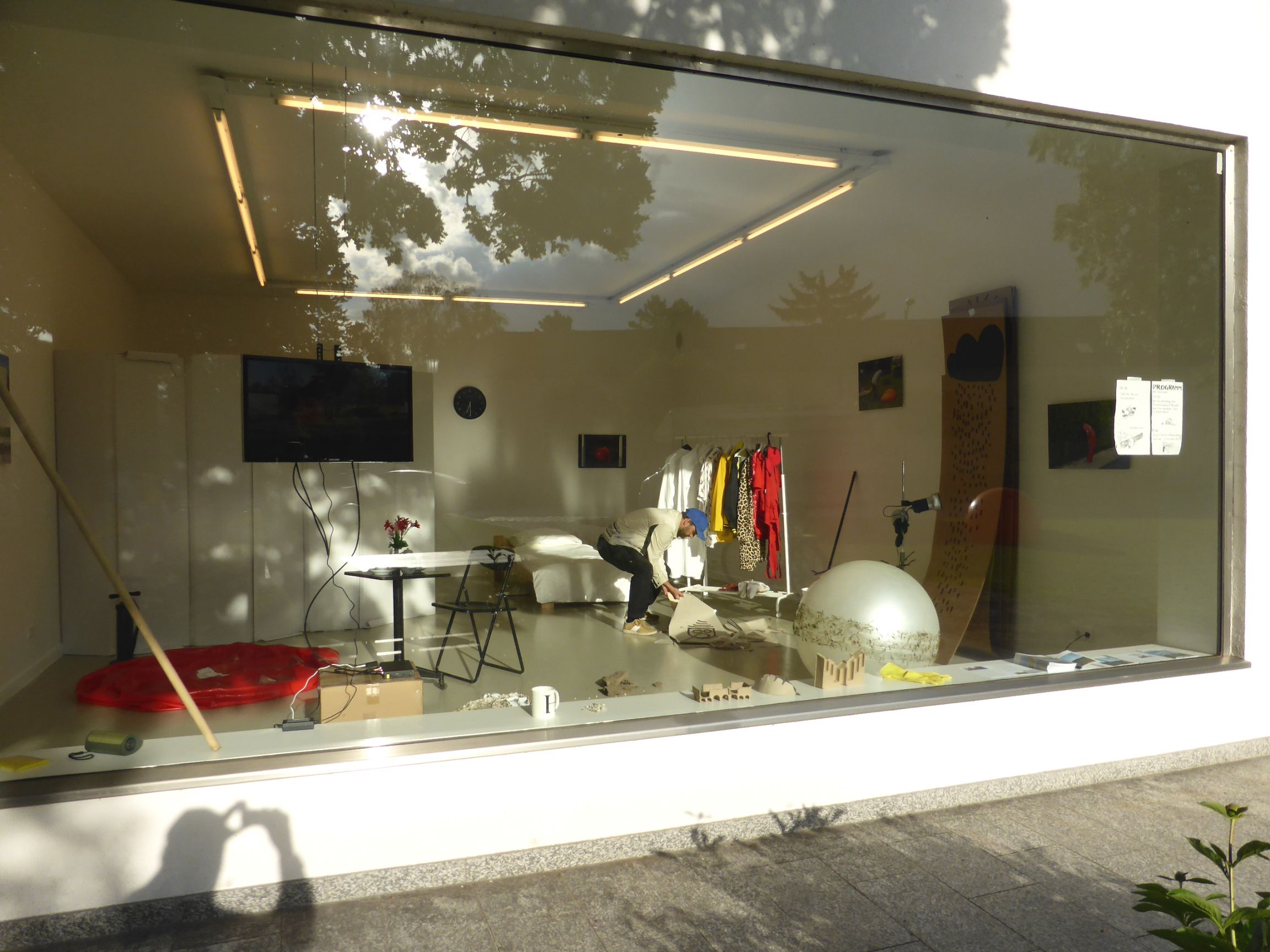Hannes Gröblacher
:
Opportunity
Back
Information
Walter Kreuz
Who Owns Everyday Life?
If Western culture consists of exercising the freedom to fence itself in, while at the same time regarding the smallest disturbances in how the outside world looks—the tiniest deviation in everyday rituals in the public realm—as a threat to personal safety, then we need people who well and truly celebrate everyday rituals, activities, and habits in a new, condensed form.
We need people who focus on stereotypical acts in public; people who place everyday activities and patterns of movement on an invisible, open-air stage; people who, for example, stand at the edge of the village and wave goodbye to those on their way to work and welcome them home again; people who clean the important traffic signs at crucial intersections; people who take their five o’clock tea in the middle of the village square, who leisurely roll an oversized exercise ball through town, or who let soap bubbles float in the air to show what direction the wind is blowing because maybe, just maybe, we need people to indicate the direction of the wind by making soap bubbles.
Hannes Gröblacher matches this job profile to a tee. He offers exactly this kind of concentrated mix of everyday activities in which he changes something familiar into something special. Gröblacher is a landscape architect and artist who knows what the effect can be if you transpose something into the realm of art. He says, “Art creates inner motion: architectural designs are a suitable way to test reality.” According to him, the same is true for artistic activities. Immediate knowledge can only be achieved through personal experiencing artistic performances, he says.
For Gröblacher, communication is the most important thing. His work is about a special way of starting a conversation with the locals. One doesn’t confront viewers with hot air, but with humorously wobbling soap bubbles that incidentally indicate the direction and strength of the wind. It’s about an affectionate way of disturbing people’s desire to be left alone. While asking each other questions is already the first step of communication, the agitation and outrage some people may have felt when confronted with some of Gröblacher’s “activities” in public also count as inner movements caused by art.
To what extent are the actions or activities that are more or less consciously performed by individual people or the community public? Is there a copyright for repetitive patterns of behavior? And most importantly: Who owns everyday life? Gröblacher focused on these questions in his art performance that lasted for seven days. The fact that he repeatedly—and intentionally—crossed the boundaries between public and private was an integral part of his strictly timed, planned daily activities. All the while, he did not touch or set foot on private property, and his actions could at most be (mis)understood as “disturbing the ownership of mental images.”
However, if you, like the author of these lines, have witnessed Gröblacher’s “entering energy,” then you cannot avoid being rather fascinated. Provided you are not driven by administrative plans, economic purposes, or cultural predispositions, you begin to get a sense of the possibilities to be found in an unused area, a public square, or a forgotten traffic island.
You simply enter those places.




